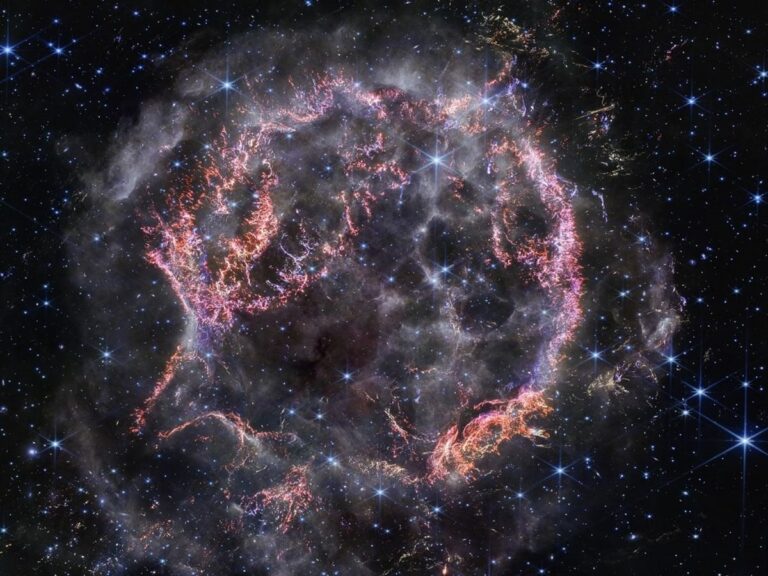James Webb Space Telescope Unveils Fresh Insights into the Supernova Remnant Cassiopeia A, Once More
Cassiopeia A stands as the remnants of a deceased star, situated 11,000 light-years away. This celestial entity has been extensively studied, and Webb had previously scrutinized it using the mid-infrared instrument onboard. Presently, the premier deep space observatory has redirected its focus to the supernova remnant, employing the near-infrared instrument.
The James Webb Space Telescope has once again directed its infrared observations toward the supernova remnant known as Cassiopeia A (Cas A). This striking aftermath of a star’s explosive demise had been previously investigated by the flagship deep space observatory using the Mid-Infrared Instrument (MIRI) earlier in the year. Now, Webb has revisited Cas A, employing the Near-Infrared Camera (NIRCam), revealing additional details that were previously unseen. Cas A is a extensively studied supernova remnant, having been observed by multiple ground and space telescopes in the past. Webb has now captured the object in unprecedented resolution using near-infrared light.
The recently unveiled image showcases the most striking features within the inner shell of the supernova remnant, characterized by clusters of orange and pink hues. A meticulous analysis of the light emitted by Cas A has disclosed that these matter clusters consist of sulphur, oxygen, argon, and neon, elements forged within the star’s cosmic furnace. Surrounding the remnant, the expelled material resulting from the star’s violent demise collides with circumstellar matter, generating energetic particles.
Additionally, the image reveals the presence of light echoes encircling the remnant. These light echoes result from the supernova’s light warming the surrounding dust, subsequently emitting light as it cools.
Typical of images captured by the James Webb Space Telescope, the targeted supernova remnant shares its frame with a backdrop of more distant stars and galaxies. The foreground stars are distinguished by prominent six-pointed diffraction spikes, a phenomenon arising from the interaction of light with the internal support structure of the instrument. These spikes, characterized by their hexagonal pattern, serve as a distinctive signature of the instrument, instantly identifying the observatory responsible for capturing the space image. In contrast, images taken by the Hubble Space Telescope exhibit cross-shaped diffraction spikes.
Do not forget to share your opinion with us to provide you with the best posts !




0 Comments